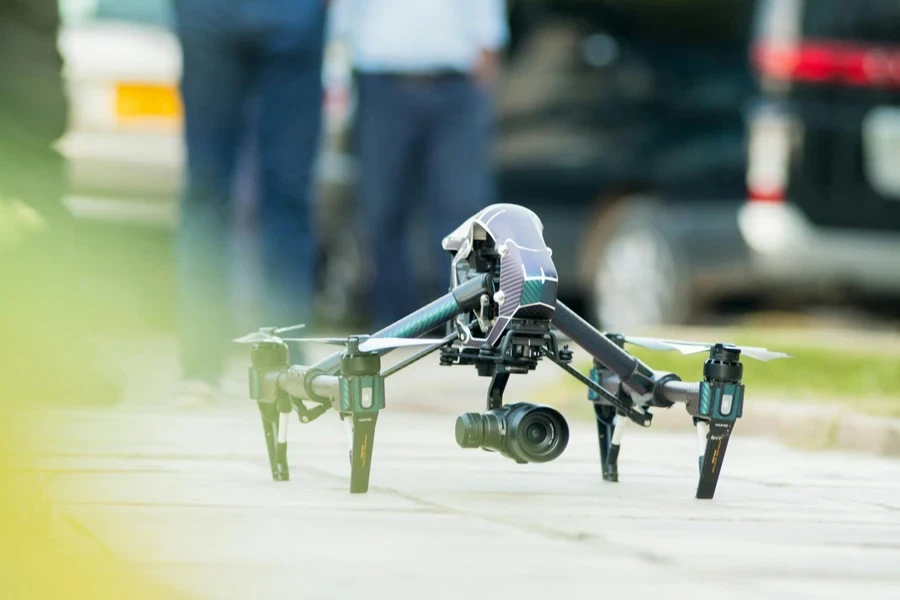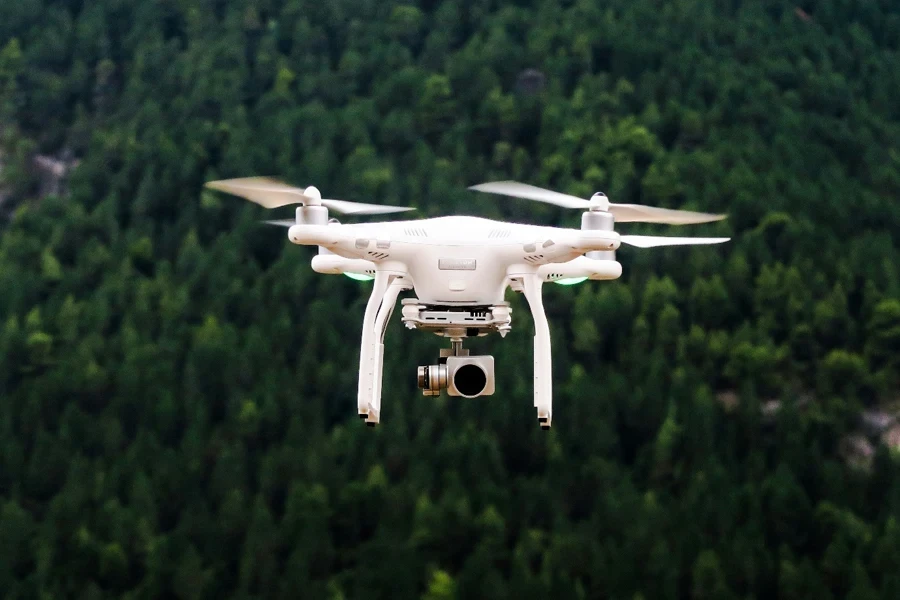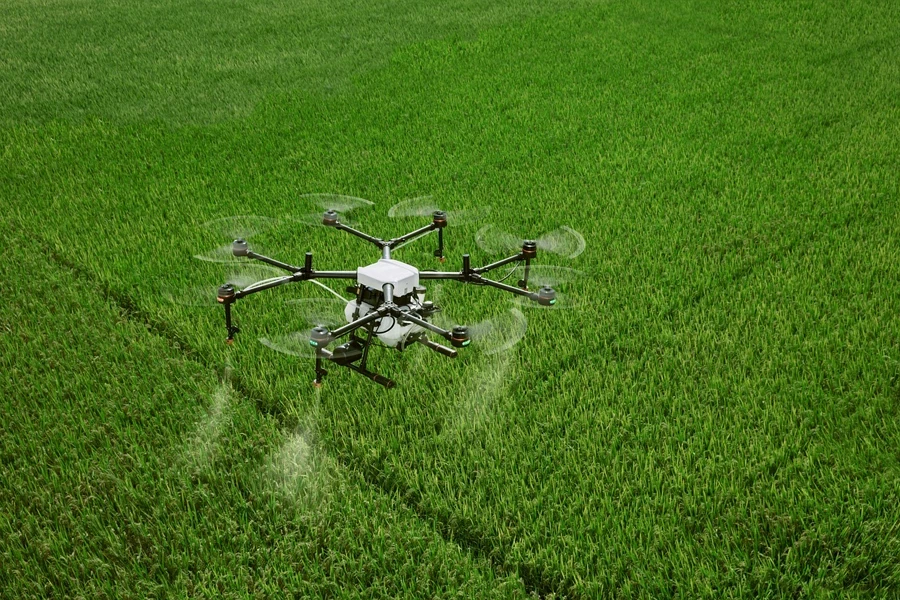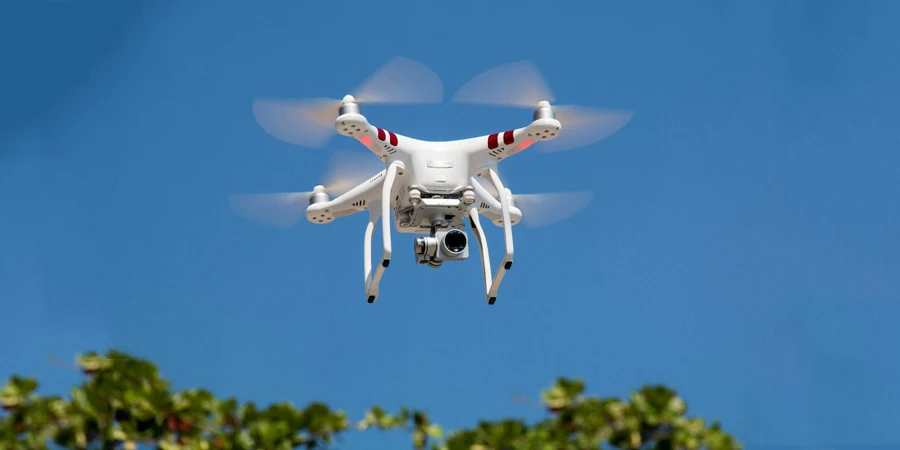Drones have rapidly transformed from hobbyist gadgets into indispensable tools across diverse industries, driven by technological advancements and increasing market demand. With applications ranging from agriculture to defense, understanding the evolving market dynamics is crucial for professional buyers seeking to stay ahead of industry trends. The continuous integration of AI, advanced sensors, and enhanced flight capabilities has redefined what drones can achieve, making them vital assets in business operations. This article provides an in-depth analysis of the latest market trends and innovations, guiding decision-makers in selecting the best solutions for their needs. Staying informed on these developments is essential for maintaining a competitive edge in the fast-growing drone sector.
Table of Contents
● Market overview
● The rise of intelligent drones: Key technology and design innovations
● Top drones setting the pace in the global market
● Conclusion
Market overview

Global market growth
The global drone market is experiencing robust expansion, driven by advancements in technology and increasing demand across various sectors. The market was valued at $27.7 billion in 2023 and is projected to reach $59.2 billion by 2032, growing at a compound annual growth rate (CAGR) of 10.84% during this period, according to IMARC Group. This significant growth is attributed to the rising adoption of drones for commercial applications, such as aerial surveying, agriculture, and logistics, as well as the integration of cutting-edge technologies like AI and machine learning.
Regional market dynamics
North America leads the global drone market, bolstered by strong research and development infrastructure and supportive regulatory frameworks. The region’s dominance is further reinforced by the extensive use of drones in industries like agriculture, public safety, and construction. According to IMARC Group, technological innovations and increased demand for data collection and operational efficiency are key drivers in this region. In contrast, Asia-Pacific is emerging as a fast-growing market, particularly in countries like China, Japan, and India, where government initiatives and expanding commercial applications are fueling market growth.
Sector-specific trends
Drones are becoming increasingly vital in sectors such as agriculture, construction, and defense, where their ability to enhance productivity and streamline operations is being fully realized. In agriculture, drones equipped with multispectral sensors are revolutionizing crop monitoring and precision farming, leading to higher yields and more efficient resource management. The construction industry is leveraging drones for site surveys, infrastructure inspections, and progress monitoring, significantly reducing labor costs and improving accuracy. Meanwhile, the defense sector continues to be a major market driver, with drones playing a critical role in surveillance, reconnaissance, and tactical operations, contributing to a substantial portion of the market’s revenue.
Key technology and design innovations

AI and machine learning integration
AI and machine learning have drastically enhanced drone capabilities, particularly in autonomous operations. Drones are now equipped with neural networks that allow them to process vast amounts of data in real-time, enabling features like autonomous navigation and intelligent path planning. For example, modern drones can perform complex object recognition tasks, distinguishing between different types of structures, vehicles, or even individual plants within a field. These AI-driven systems also enable real-time adaptive learning, where the drone continuously improves its performance by analyzing environmental data and optimizing its flight routes for efficiency and safety.
Advanced camera systems
The leap in drone camera technology has been fueled by the integration of large image sensors and advanced optics. High-end drones now feature 1-inch or even Four Thirds CMOS sensors, significantly larger than the typical 1/2.3-inch sensors used in earlier models. These larger sensors capture more light, improving image quality in low-light conditions and enabling higher dynamic range and better noise reduction. Additionally, mechanical shutters have replaced electronic ones in many professional drones, eliminating the rolling shutter effect and delivering sharper images, especially during high-speed flights. Optical zoom lenses with variable apertures allow operators to maintain image clarity at varying distances, enhancing the versatility of drones in tasks like wildlife monitoring and cinematic filming.
Extended flight capabilities

Advancements in power management and aerodynamics have led to significantly longer flight times. High-capacity LiPo (Lithium Polymer) batteries now offer higher energy density, allowing drones to stay airborne for over 45 minutes on a single charge. This is complemented by efficient brushless motors that reduce energy consumption while providing more thrust, enabling drones to maintain stability even in challenging weather conditions. The incorporation of carbon fiber and magnesium alloys in drone frames has also reduced overall weight without compromising durability, contributing to both extended flight times and enhanced maneuverability. Moreover, foldable propellers and arms not only improve portability but also reduce drag during flight, optimizing energy efficiency further.
Safety and navigation technologies
Safety systems in drones have evolved to include multi-directional obstacle detection, with some models featuring ultrasonic, infrared, and stereo vision sensors to detect obstacles in all directions. These systems are often powered by dual-core processors that handle complex computations for real-time obstacle avoidance and route correction. RTK (Real-Time Kinematic) GPS is another significant advancement, offering centimeter-level positioning accuracy, which is crucial for precision tasks such as surveying and infrastructure inspection. Failsafe algorithms are now standard, automatically triggering return-to-home functions if the drone encounters a critical issue, such as a sudden loss of GPS signal or low battery voltage.
Specialized sensors and applications
Drones equipped with specialized sensors are pushing the boundaries of what is possible in fields like agriculture, emergency response, and industrial inspection. Thermal cameras with high-resolution microbolometers are used in drones for detecting minute temperature variations, essential for tasks such as firefighting and electrical inspections. Multispectral sensors capture data across different wavelengths, from visible light to near-infrared, allowing for detailed analysis of vegetation health, moisture content, and soil composition. In industrial settings, drones with LiDAR (Light Detection and Ranging) sensors create high-resolution 3D maps of terrain and structures, with accuracy down to a few centimeters, which is invaluable for construction planning, mining operations, and archaeological surveys. These technological advancements enable drones to perform specialized tasks that were previously impossible or highly inefficient.
Top drones setting the pace in the global market

DJI Mini 4 Pro: The lightweight leader
The DJI Mini 4 Pro is making waves in the sub-250g drone market, setting new standards with its exceptional balance of portability and performance. Weighing just 249 grams, it bypasses many regulatory requirements while still offering 4K60 video recording, making it ideal for both enthusiasts and professional content creators. The Mini 4 Pro’s omnidirectional obstacle sensing system provides enhanced safety, allowing it to navigate complex environments with ease. Additionally, the extended battery life, offering up to 34 minutes of flight time, coupled with a D-Log M color profile, ensures that it delivers high-quality, consistent video output, making it a top choice for those looking for a compact yet powerful drone.
DJI Mavic 3 Pro: Professional’s choice for aerial photography
The DJI Mavic 3 Pro continues to be a preferred option for professional aerial photographers and videographers. Its triple-camera system includes a 20MP Four Thirds sensor, which is capable of capturing high-resolution images with exceptional dynamic range. The adjustable aperture from f/2.8 to f/11 allows for greater control over exposure in varying light conditions, while the dual telephoto lenses (3x and 7x zoom) provide flexibility in capturing distant subjects with clarity. The Mavic 3 Pro’s ability to record 5.1K video at 50fps ensures that it meets the demands of high-end production, and its omnidirectional obstacle sensing enhances flight safety, making it a reliable tool for professionals.
Autel Robotics Evo Lite+: The all-rounder
The Autel Robotics Evo Lite+ stands out as a strong competitor to DJI, particularly with its 6K video capabilities and 1-inch CMOS sensor. This drone offers 20MP stills and features an adjustable aperture from f/2.8 to f/11, similar to the Mavic 3 Pro, allowing for versatile shooting in various lighting conditions. With a 40-minute flight time, it surpasses many of its competitors, making it highly suitable for extended missions. The Evo Lite+ also includes three-way obstacle avoidance, which, although not as comprehensive as DJI’s systems, provides sufficient safety for most applications. Its robust performance in both photography and video makes it a popular choice for those seeking a versatile, high-performance drone.
DJI Avata 2: Revolutionizing FPV flying
The DJI Avata 2 is at the forefront of the growing FPV (First-Person View) drone market, offering an immersive flight experience with high-quality 4K/60fps video. This model is equipped with a 1/1.7-inch sensor that provides sharp and detailed footage, essential for FPV enthusiasts who prioritize image quality. The Avata 2’s intuitive flight controls and improved goggles make it accessible even to newcomers, while its 23-minute flight time is impressive for an FPV drone, allowing for extended exploration. Its robust build and advanced features, such as electronic image stabilization, are driving its popularity in both recreational and semi-professional markets.
New contenders and market shifts
While DJI continues to dominate, the drone market is witnessing the rise of new contenders and innovative trends. Models like the Sony Airpeak S1, with its ability to carry professional-grade cameras, are appealing to high-end cinematographers, despite its premium price. Similarly, the Parrot Anafi Ai, known for its 4G connectivity and AI-driven features, is gaining traction in industrial applications where real-time data transmission is crucial. The integration of 5G technology in newer models is also set to revolutionize long-distance operations, enabling real-time video streaming and faster data processing, which will be particularly beneficial for commercial and industrial drone applications. As these trends evolve, they are likely to shift market dynamics, introducing more competition and innovation in the drone industry.
Conclusion

Continuous innovation in drone technology, combined with the success of top-performing models, is propelling the drone market to new heights, driving significant advancements across various industries. From AI integration and advanced camera systems to extended flight capabilities and specialized sensors, these innovations are enhancing the functionality and versatility of drones, making them indispensable tools in fields such as agriculture, construction, and filmmaking. As leading models like the DJI Mini 4 Pro and Mavic 3 Pro set new benchmarks, the market is poised for further growth, with emerging technologies and new entrants promising to reshape the landscape even further.




